Steamer Point Local Nature Reserve
Steamer Point Nature Reserve is one of the newest Local Nature Reserves (LNR's) in the country. It covers, in all about 27 acres, hugging the cliff top above Highcliffe beach in Dorset on the south coast of England. It was originally part of the garden and associated land of Highcliffe Castle. Lord Bute was the first owner of this area and built a mansion on the current site of Highcliffe Castle in the late 18th century. At this time the estate associated with what is now Highcliffe Castle was much larger than today, stretching from Chewton Bunny Common near Highcliffe village down along through Friarscliffe to Mudeford Quay.
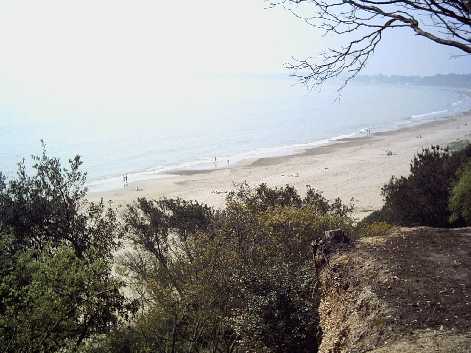
A view from the cliff edge at one of the many vantage points within the nature reserve looking west towards Mudeford Quay
The area gained its name after a later owner, Lord Stuart de Rothsay who used an old paddle steamer as a site office for the construction of what is now Highcliffe Castle. The old boat was beached in a small inlet and jammed between two large trees in or around 1830. Later the boat became a beach house for about 60 years but fell into disuse and dereliction at the turn of the 20th century. I remember, (as a boy in the 1960's) there was an old ships boiler, only visible at low tide, near to where the current beach ramp comes down to from Highcliffe castle. The location of Steamer Point is usually associated with the locality of the old radar dome about a mile West of this. Whether this boiler slowly drifted to its eventual resting place or was from another vessel I do not know. Today it has either been removed or more likely lies buried under the sea floor just off Highcliffe beach.
Lord Stuart de Rothsay not only set about building a castle but also set about laying out extensive gardens. Many exotic and unusual species of plant and tree were imported, often, unfortunately, to the detriment of the local vegetation. Much work has been done by local volunteers and Christchurch council to remove the foreign vegetation and return the reserve to native flora and fauna.
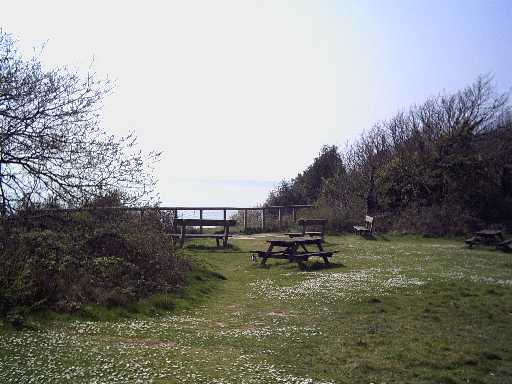
One of the excellent and well thought out picnic areas. Most have stunning views
While this reserve offers uncompromising support to neglected environmental areas by keeping its dead standing wood, it also offers what can only be described as idyllic settings for picnics and family recreation. The views from the cliff edge are truly magnificent and difficult to beat anywhere in the world. That coupled with a fantastic beach make this place truly special.
Highcliffe castle, itself has had a chequered history. It became a Seminary for the training of missionaries and clerics in the 1950's and 1960's and was strictly off limits. The current LNR was inaccessible except to those who were resident at the seminary and was poorly maintained. After the seminary closed the castle stood empty for a number of years until being bought by a developer. Planning permission was refused to (I believe) demolish the listed building and erect some houses. Suspiciously the castle caught fire and was severely damaged on more than one occasion. However the council still refused planning permission for its destruction and eventually the building was subject to a compulsory purchase order and has been restored to its present state. Part of the grounds have been given over to a car park which makes the beach much more accesible than it was before the late 1990's. A ramp has also been installed further easing access. The beach is now quite popular and although it still remains one of the more natural beaches within the country, it has lost a little of the elemental and lonely wildness it had in my youth.
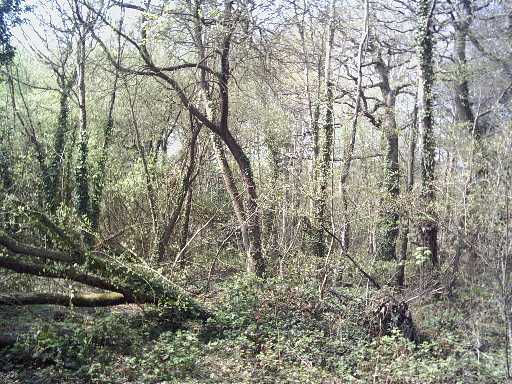
Dead standing wood provide essential habitat to the local plant and animal specie
Very little traditional woodland maintenance has been carried out on the forest that forms the major part of this LNR. Consequently there is a relatively large amount of standing dead wood, which although looking a little untidy actually provides good quality habitat for a number of species that would otherwise be excluded. There are two ponds within Steamer Point, both having been resurrected in the last few years. Thoughtful layout of the area has integrated visitor ameneties such as picnic tables and benches at lookout sites into the LNR. Today, the LNR is a thriving example of good quality (and with its standing dead wood : different!) nature reserve and, with its spectacular views over the solent and local beach, is well worth exploring.
During WWII, the western end of what is now Steamer Point Nature Reserve was acquired by the MOD and became a secret development site for Radar and signals intelligence. The establishment that was built on this area was known as SRDE (Signals Research and Development Establishment) This establishment, under great secrecy, developed the UK's first satellite based communications system, mainly for communications between the UK and Warships at sea. One of the most memorable features of theis site was the large white golf ball shaped inflatable dome which sheltered a large satellite communications dish until the mid 70's. Today all that is left of this establishment is the base for this dome (along with the bases for two other smaller domes) and a number of block houses and sentry posts.
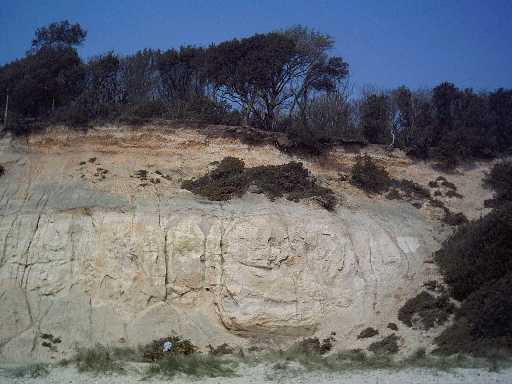
The cliffs below Steamer Point Nature Reserve
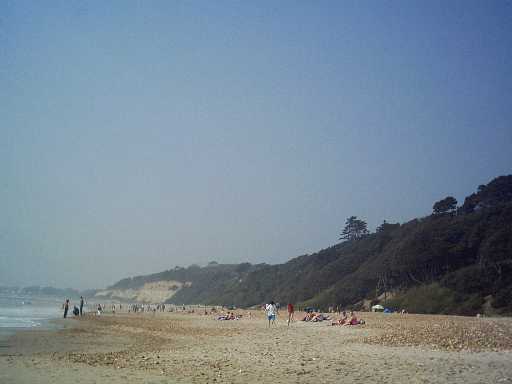
A view down the magnificent beach beneath Steam Point Nature Reserve.
One of the truly beautiful aspects to this area is the beach. Until the relatively recent addition of access points from Highcliffe castle, the only real access was by walking over a mile from Friars Cliffe Beach. This deterred many and ensured that often, you could visit the beach and know you were the sole visitor. Today access is easier and the beach is more popular. However, it does still retain a great deal of its natural feel and is my personal favorite within the area.
During the 1960's a great deal of concern was expressed about erosion of the cliff. A large concave cliff defence was erected below (what was then) the radar dome. No doubt the huge cost of this defence was met by the MOD who then had a considerable vested interest in protecting this area from erosion.
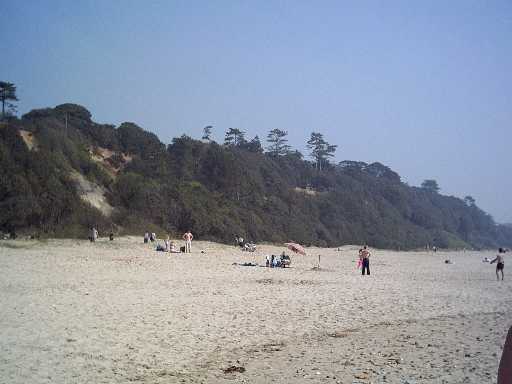
The beach below Steamer Point.
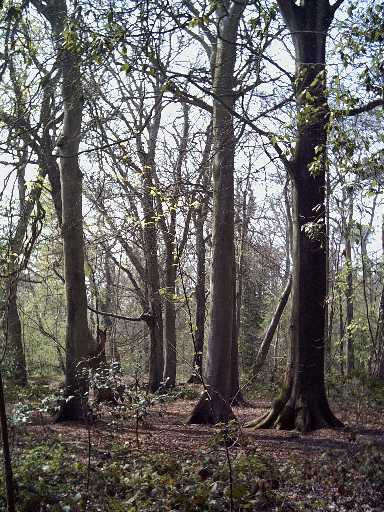
Steamer Point Forest
The most unusual thing about the forest at Steamer Point is that you find here full size but dead standing trees. Normally in managed forest these are removed and along with them, a whole ecosystem based on dead timber. Luckily here, that has not happened and what is now a truly rare environment has flourished. One sound heard in this reserve, but rarely elsewhere, is the rat-at-at of woodpeckers cutting their way into the dead wood.
The geological formation of this area dates back between 40 - 50 million years and is of a similar age to that of Hengistbury Head The sandy nature of the soil leads to a dry acidic soil similar to Hengistbury Head and is the natural environment for heathland, chines and (down on the beach) sand dunes.
When the gardens were originally laid out a number of foreign species were introduced. As it went wild, they tended to crowd out the native plants. When the area was formally taken over there was actually a poor state of plant diversity with a number of the introduced species forming areas of monoculture. Today this is being rectified and many species of both native plant and animal have been successfully returned to the nature reserve.